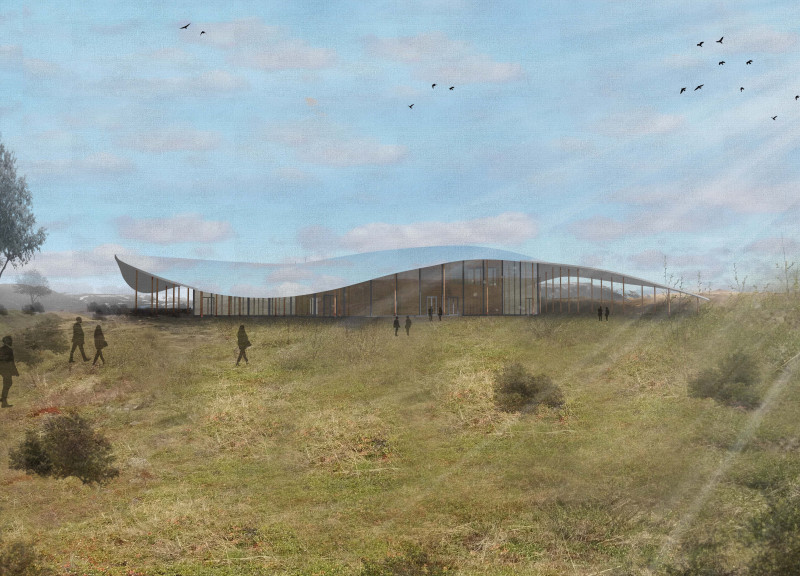5 key facts about this project
The Volcano Museum is located in Northern Iceland, designed to connect with the remarkable surrounding landscape. Its primary purpose is to educate visitors about volcanic phenomena while offering engaging, interactive exhibits. The design concept centers on creating a relationship between the building and the land, reflected in its rectangular shape and extended roof, which directs attention to the nearby Hverfjall Volcano.
Structural Form and Layout
The design features a rectangular form lifted by wooden columns, creating an open and airy feeling. This elevated roof allows for clear sightlines across the terrain, ensuring that natural light brightens the interior. A central core divides the building into functional areas, facilitating visitor movement and enhancing the museum experience. One side accommodates the Multipurpose Exhibition Hall, and the other includes a café, offices, and meeting rooms.
Interaction with Nature
The outdoor spaces surrounding the museum are intended for use during warmer months, providing sheltered areas that evoke a forest-like setting. The extended roof creates a gentle flow between indoor and outdoor environments, promoting interactions with the landscape. These outdoor zones enhance the museum's overall function while deepening its ties to nature.
Reflective Roofing
A key feature of the design is the use of mirrored roof tiles, which reflect the Icelandic scenery and the Northern Lights. This element allows the roof to change in appearance throughout the day, fostering a visual connection to the environment. The reflective surface also minimizes the building's impact, helping it blend into the picturesque surroundings while enriching the visitor experience.
Materials and Construction
Materials selected for the museum include sturdy wooden columns that support the roof, giving a balance of strength and warmth. Steel components in the roof ensure durability and stability, while reinforced concrete slabs form a solid foundation. This thoughtful choice of materials meets practical needs and resonates with Iceland's geological context, grounding the building in its environment.
The design captures a lively interaction between the museum and its natural surroundings, inviting visitors to explore the exhibits as well as the remarkable landscape that surrounds them.





















































